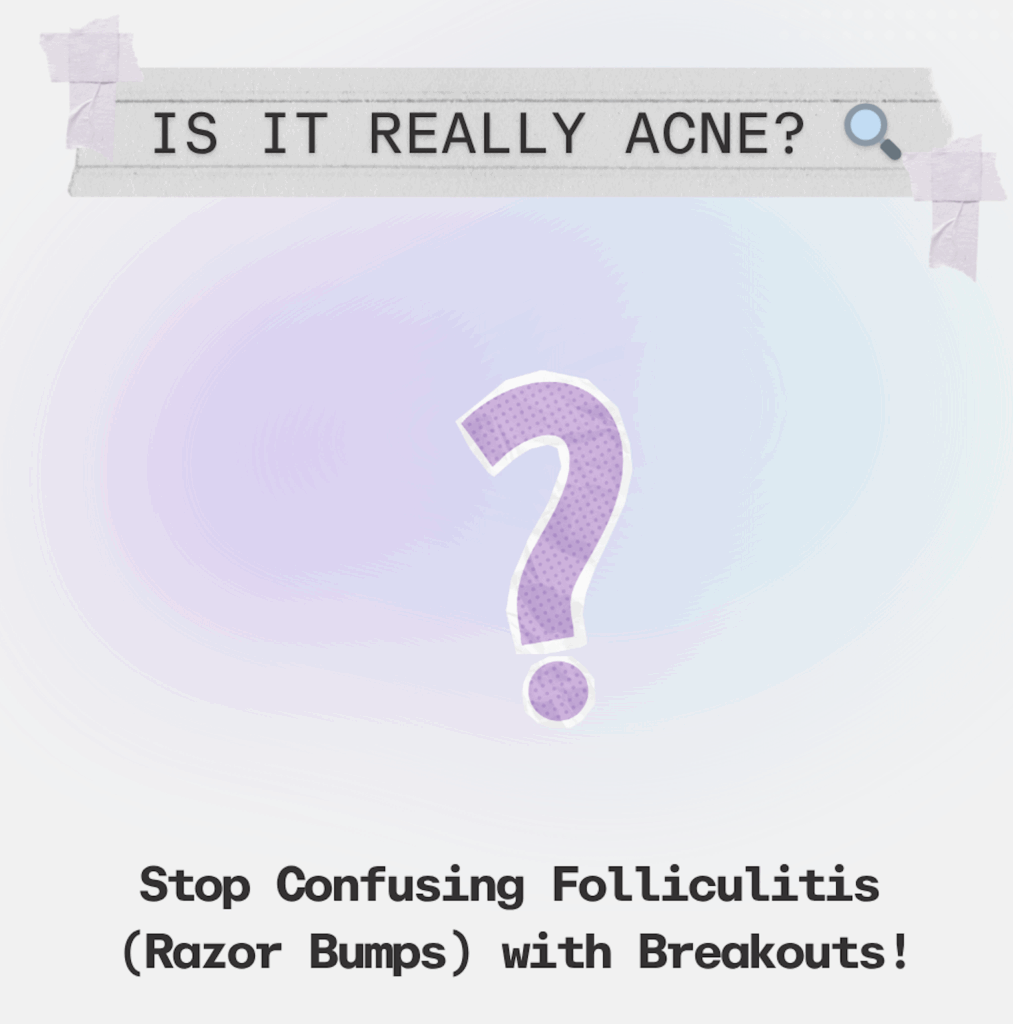Finding Clarity is the First Step
If you are frustrated by red bumps that don’t respond to typical acne treatments, you are not alone. The problem may be Folliculitis—a highly common condition often confused with acne. Finding clarity is the first step toward finding relief.
The Key Distinction: Follicle vs. Pore
Acne Vulgaris (AV): The process starts with a blockage, which results in the characteristic comedones (blackheads/whiteheads).
Folliculitis (F): This is specifically the inflammation or infection of the hair follicle itself. Folliculitis lesions do not have comedones

Click on a step below to reveal the full action plan:
The Definitive Razor Bump Management Protocol
❓ Understanding Pseudofolliculitis Barbae (PFB)
What Exactly is PFB (Razor Bumps)?
PFB, or razor bumps, is the most common form of non-infectious folliculitis. It is an inflammatory reaction to ingrown hairs, not an infection. It is caused by sharp, coarse, tightly curled hairs re-entering the skin after being cut too closely.
Who is Most Affected?
The condition is significantly more common in individuals with tightly curled, coarse hair. The natural curl of the hair makes it more likely to grow back into the skin after being cut, triggering inflammation.
🤕 Treating Active Razor Bumps
What should I do if I already have razor bumps (PFB)?
The single most effective strategy during acute inflammation is to stop shaving to allow the skin surface and embedded hairs to normalize. You can apply a warm, moist washcloth several times daily to relieve discomfort and help the area drain, if needed.
How do I know if these bumps are infected?
If the bumps become pus-filled (pustules), are very painful, or do not improve, seek professional help. These signs may indicate a secondary bacterial infection (Folliculitis barbae).
🚿 Preventing Razor Bumps (The Essential Changes)
What are the best shaving tools and techniques for razor bumps?
To prevent the hair tip from re-entering the skin, use an electric razor instead of a blade. If using a blade: Change the blade frequently (after every one or two shaves), always shave with the grain (in the direction the hair grows), and avoid stretching the skin.
Which cleansers help prevent ingrown hairs?
Use over-the-counter products containing gentle exfoliants. to help unblock follicles. Look for washes containing Benzoyl Peroxide (BPO), Salicylic Acid (BHA), or Glycolic Acid (AHA) to exfoliate the area.
🌱 Holistic Triggers & Other Folliculitis Types
What triggers razor bumps?
It is recommended to avoid wearing tight garments because friction causes mild physical injury to the hair follicles. Tight, non-breathable fabrics trap heat and moisture, which promotes microbial growth. Shower immediately after intense physical activity or sweating.
What are the signs of fungal or bacterial folliculitis?
Fungal (Malassezia): Lesions are typically small, uniform, and extremely itchy. Antibiotics are not helpful and can worsen this type.
Bacterial (Staph / Hot Tub): Caused by bacteria like Staphylococcus aureus or Pseudomonas aeruginosa (hot tub rash). Severe cases require prescription antibiotics.
You got this. Finding Clarity Reduces Stress!
By prioritizing proper shaving techniques and recognizing the difference between your bumps—especially the telltale signs of razor bumps versus true acne—you simplify your routine and see faster results. Accurate diagnosis is the first and most critical step toward achieving clear skin.
experience self care & build community. let's trust the process together.
Want to see past topics?
You can explore the full Skin 2000 Club archives here.
